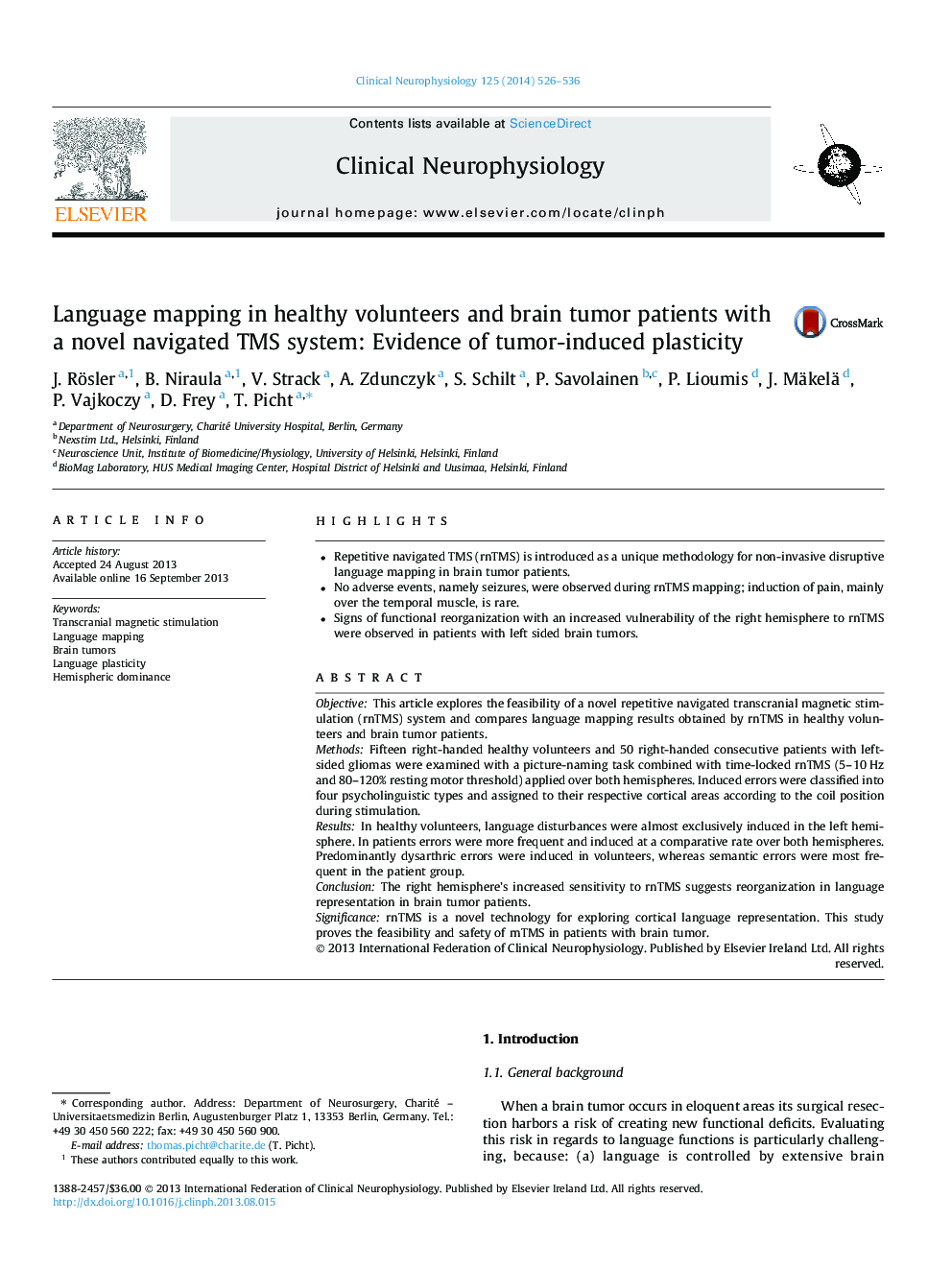| Article ID | Journal | Published Year | Pages | File Type |
|---|---|---|---|---|
| 3043942 | Clinical Neurophysiology | 2014 | 11 Pages |
•Repetitive navigated TMS (rnTMS) is introduced as a unique methodology for non-invasive disruptive language mapping in brain tumor patients.•No adverse events, namely seizures, were observed during rnTMS mapping; induction of pain, mainly over the temporal muscle, is rare.•Signs of functional reorganization with an increased vulnerability of the right hemisphere to rnTMS were observed in patients with left sided brain tumors.
ObjectiveThis article explores the feasibility of a novel repetitive navigated transcranial magnetic stimulation (rnTMS) system and compares language mapping results obtained by rnTMS in healthy volunteers and brain tumor patients.MethodsFifteen right-handed healthy volunteers and 50 right-handed consecutive patients with left-sided gliomas were examined with a picture-naming task combined with time-locked rnTMS (5–10 Hz and 80–120% resting motor threshold) applied over both hemispheres. Induced errors were classified into four psycholinguistic types and assigned to their respective cortical areas according to the coil position during stimulation.ResultsIn healthy volunteers, language disturbances were almost exclusively induced in the left hemisphere. In patients errors were more frequent and induced at a comparative rate over both hemispheres. Predominantly dysarthric errors were induced in volunteers, whereas semantic errors were most frequent in the patient group.ConclusionThe right hemisphere’s increased sensitivity to rnTMS suggests reorganization in language representation in brain tumor patients.SignificancernTMS is a novel technology for exploring cortical language representation. This study proves the feasibility and safety of rnTMS in patients with brain tumor.
